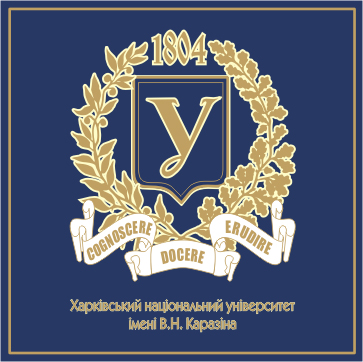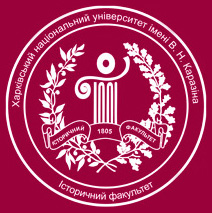
Projects
CityFace: Practices of the Self-Representation of Multinational Cities in the Industrial and Post-Industrial Era
CityFace is an inter-university project for the
exploration and rethinking of the symbolic space of several key cities
in eastern and southern Ukraine – Dnipro, Donetsk, Zaporizhia, Odesa,
and Kharkiv. The project was begun in June 2018 and will extend till May
2021.
Project CityFace is an interdisciplinary study of the symbolic space of five Ukrainian cities, aiming to reveal their ‘faces’ and analyze the transformations of their inhabitants’ identities over time. In our research, we draw on visual materials and maps, memoirs and oral testimonies of the target cities’ residents, local periodicals, official documents, and other relevant source groups.
The project focuses on sites of collective memory, commemorative practices (ceremonies of honoring the memory of persons or events), and practices of urban self-representation (such as the use of symbols and emblems, formation of pantheons of local heroes, or memorialization of certain ‘key’ or symbolic events and dates).
What we have done so far:
- We have set up a website for the project (https://cityface.org.ua/) – a forum for the scholarly discussion of the specifics and features of the evolution of the symbolic space of Ukraine’s cities. The project also has a Facebook page: https://www.facebook.com/project.cityface/.
- We have created and are continuing to add contents to the database “The Symbolic Space of the Cities of Eastern and Southern Ukraine” (https://cityface.org.ua/data/) – an open resource, the materials of which can be freely used for research.
- We have initiated field studies aiming to create a photographic record of symbolic space and ‘sites of memory,’ analyze museum collections and expositions, and map symbolic objects.
- We have begun interviewing and distributing questionnaires among the stakeholders in the transformations of urban symbolic space (approximately 500 filled questionnaires and 10 semi-structured interviews have been collected).
- We have organized 9 academic seminars on cultural heritage and historical memory and on the use of information technology in urban studies (see https://cityface.org.ua/conferences).
- Project participants have taken part in more than 60 events to promote the project and publicize our research (https://cityface.org.ua/news). In particular, more than 10 presentations have been given in the project’s target cities to promote the study of the tangible and intangible cultural heritage of Ukrainian cities.
Organizers:
The project brings together more than 60 researchers from 5 Ukrainian cities, mostly faculty from the V. N. Karazin Kharkiv National University, as well as Oles Honchar Dnipro National University, Vasyl Stus Donetsk National University, Zaporizhia National University, and I. I. Mechnikov Odesa National University.
The project has become possible thanks to the financial
support of the Kowalski Program and the Contemporary Ukraine Studies
Program at the Canadian Institute of Ukrainian Studies, University of
Alberta (Edmonton, Canada).
About the project (https://en.cityface.org.ua/)

The collective monograph "In Search of the Face of the City: Practices of Self-Representation of Ukrainian Cities in the Industrial and Post-Industrial Era" (Kharkiv, 2021) edited by Sergiy Posokhov and Volodymyr Kravchenko.
The results of the CityFace project are published in collective monograph “In Search of the Face of the City: Practices of Self-Representation of Ukrainian Cities in the Industrial and Post-Industrial Era” . Central to this book is the study of practices of urban self-representation (the use of symbols and emblems, formation of a pantheon of local heroes, commemoration of “significant” events, and so forth). The authors are thus interested in sites of collective memory, commemorative and ritual practices, and operations of the symbolic coding and recoding of urban space. The authors of the book are 42 Ukrainian scholars from Donetsk / Vinnytsia, Dnipro, Zaporizhzhia, Odessa, and Kharkiv. A characteristic feature of the book is the interdisciplinary approach. Most of the contributors are professional historians; but sociologists, culturologists, geographers, and philologists also took part in the project.
The structure of the book reflects the objectives of the project. In particular, the latter had three basic components (symbolic, semantic, and spatial), and the book includes corresponding thematic sections. The first section of the book is entitled “Urban Studies: New Horizons.” Here the reader will find chapters by representatives of various branches of the humanities and social sciences, who attempt to define and convey their vision of the main current trends in urban studies. The second section of the book bears the title “The City Metaphorical.” Certain definitions and comparisons that we encounter in various texts about cities obviously have a metaphorical nature. Thus we can say that the urban image that gains currency in a given period is formed on the basis of the “dominant metaphors”. The third section of the book is entitled “The City Personified,” because in the course of the formation of the urban image an important role is played by names of prominent individuals. The memory of these figures is honored with monuments and memorial plaques; they are immortalized in names of streets and institutions. The fourth section, “The City Symbolic,” deals with the symbolic space of the five cities under study – in particular with such its components as urban emblems and rituals, sites of memory, traditions of celebration, and so forth. The role of elements of symbolic space is to accumulate, reproduce, and broadcast the cultural meanings of a city, which form the visual matrix of urban memory. Contributions to the fifth section of the book (“The City Vernacular”) explore the relationship between the physical and symbolic space of the city, specifics of urban landscapes, and practices of their consumption by various social actors.
Scholars from Ukraine, Canada, Germany and Poland are members of the editorial board of the collective monograph. The book received positive reviews from reviewers, including foreign ones. The book is an extraordinarily interesting for investigators of history and current state of sociocultural processes in Ukraine.



